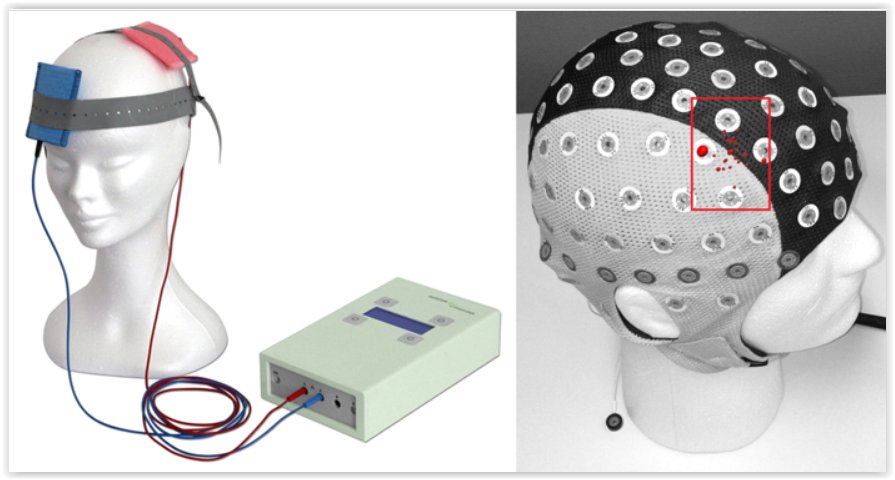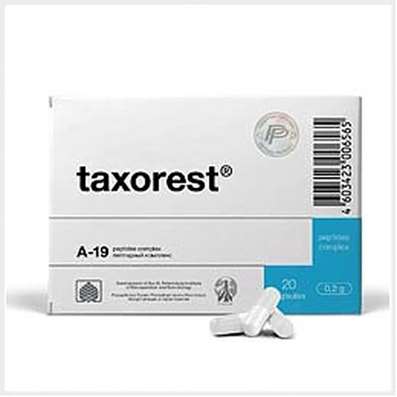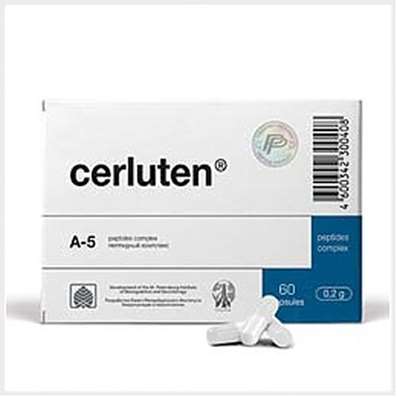Honesty can be stimulated by a weak electric current
06 Jul 2017
Previously, it was shown that a certain area of the right dorsolateral prefrontal cortex (pDLFPA) is aroused in people when they decide to perform an honest but unprofitable act. Experiments carried out using the double-blind method showed that human behavior can be made more honest if the excitability of neurons of pDLPPK is increased by transcranial micropolarization by applying an anode to the right upper part of the forehead. The effect manifests itself only if it is a question of choosing between honesty and personal gain (but not the benefit of other people), and only those subjects who on a conscious level consider dishonest behavior in this situation immoral. The results are consistent with the assumption that in the course of anthropogenesis, people have formed specialized neural structures responsible for prosocial behavior to the detriment of personal gain.

The well-being of society depends most strongly on the honesty of people, that is, on their ability to comply with accepted (and, as a rule, socially beneficial) rules of conduct, even when they conflict with personal gain. The society is far from always able to control the honesty of citizens, which creates the prerequisites for various manifestations of selfishness and cheating.
Fortunately, people sometimes show honesty even in completely anonymous situations, when a scam obviously can not be exposed. It seems that some of us do have something of a conscience or a "moral law in me", the existence of which so surprised and admired Immanuel Kant.
Previously, it was shown that the choice between honesty and personal benefit is related to the activity of the right dorsolateral prefrontal cortex (D.D. Greene, J.M. Paxton, 2009. Patterns of neural activity associated with honest and dishonest moral decisions). Perhaps, there is the sought "center of honesty" there? In this case, it is logical to assume that artificial stimulation of this part of the cortex will promote honest behavior.
To test this, Swiss and American psychologists have used the method of transcranial micro-polarization (see also: Transcranial direct-current stimulation). The method is based on the fact that a weak direct current (in this case a 1.5 mA current used) passed through the head, increases the excitability of neurons under the anode and reduces it under the cathode.
The experiment was attended by 145 volunteers - students at the University of Zurich. They were divided into three roughly equal groups: an experimental group and two control groups. All students were attached to the head with two electrodes. In the first group on the right side of the forehead (where the PDLPA is located), the anode was fixed, the second one had a cathode, and the third one had a "placebo", that is, an electrode through which current was not allowed during the experiment. The second electrode was located on the crown of the head. It could hardly affect the activity of the neurons under it, because it had a large area (Fig. 1).
All the students had to complete four tasks, one of which was the main one, but the students did not know about it. The rest of the assignments were given in part to deflect the eyes, partly to obtain additional useful information. Within 30 minutes, while the tasks were being performed, a current passed through the heads of the students from the first and second groups. To the third group, the current was switched on only for two minutes, so that they experienced the same weak tickling sensations as it included the other participants. It is known that in such a short time micro-polarization does not give significant effects. Most importantly, neither the subjects, nor the experimenters who worked with them, did not know which student belongs to which group (double blind method).
The main task was a test of honesty in a situation where deception, on the one hand, contributed to personal gain, on the other, it could not be exposed. Being in an isolated room alone with a computer, the subject had to throw a dice 10 times, with three faces painted in one color, three with another. No one saw the results of the cast, except the subject himself. One of the colors meant a monetary gain for the participant (9 Swiss francs), the second color - the lack of winnings. Thus, with the maximum of luck, the subject could earn 90 francs (a considerable sum for the student), with complete bad luck - not get anything. After each throw, the subject had to enter the result into the computer. At the same time he was free to cheat, that is, to assign himself a successful throw, when in reality the throw was unsuccessful.
Researchers could not identify each case of fraud separately, but they could statistically assess the overall level of fraud. At absolutely fair game the binomial distribution of winnings with an average number of successful shots equal to five is expected. The more the deviation of real results from this "ideal" into a profitable one for the subject, the lower the level of honesty in the behavior of students. This technique is often used in similar studies.
All three groups of students were clearly grafted in their favor (all three columns in Figure 2A are significantly higher than the critical mark of 50% corresponding to complete honesty). However, the degree of dishonesty in the two control groups (cathode and placebo) was higher than in the experimental group (anode). This is consistent with the idea that the activation of pDLFPA contributes to honest behavior.
True, those students who had a cathode attached to their forehead were not grafted more than those who were not exposed to transcranial micro-polarization. According to the authors, this is explained by the fact that the decrease in the excitability of neurons under the cathode is less pronounced than the increase in their excitability under the anode, as well as the high baseline level of lies in the sample studied: perhaps, in order to raise it even higher, stronger impacts are required.
To test this assumption, the authors used the data obtained during the questioning of the participants in the experiment, which was carried out immediately after the tasks were completed (the effect of micropolarization at that time still had to be preserved). In particular, the subjects were asked to assess how morally acceptable they deceive in the task of throwing a bone. As one would expect, those who considered such behavior immoral behaved more honestly during the testing. It is more interesting: it turned out that if we divide all the subjects into two equal groups by the strength of their condemnation of dishonesty, then the positive influence of micropolarization on honesty is revealed only in the half of the students who reported that they consider dishonest behavior reprehensible (Figure 3). In other words, if the subject did not see anything wrong with the goal of maximizing his winnings, the stimulation of the pFDCs did not affect his behavior. On the contrary, for those who realized the moral inadmissibility of lying, this procedure increased honesty to an absolute maximum (in this group the percentage of declared successful shots does not differ from the expected 50%).
Fig. 3. The effect of stimulation of Anodal versus placebo (Sham) on honesty in students who believe that lying in this case is acceptable (A, Low moral conflict), and those who realize that this is not good (B, High Moral conflict)
The results obtained, in principle, can also be explained in another way. For example, it can be assumed that stimulation of PDPFM makes people less self-interested, suppressing the desire for material benefits. To check this, the authors analyzed the results of one of three additional tasks. It was a game called "Dictator" (see: Dictator game): the subject had to decide what part of the amount of money he allocated to him he would donate to charity. It is known that people who reluctantly part with money in the game "Dictator", often cheat and in the tests for honesty. This was also confirmed in this case: the amount donated to charity was negatively correlated with the number of "successful" throws (the less the student donated money in the game "Dictator", the more successful shots he attributed to himself). However, stimulation of pDLFPA did not have a significant effect on the amount of donations. This means, most likely, the problem is not that the activities of the PDPAFP suppress self-interest. Other additional assignments have shown that stimulation of pDLFPA does not seem to affect the propensity for risky ventures (such as gambling) and impulsiveness.
The last question that the authors attempted to answer is whether the activity of the PIFFA only relates to the solution of moral dilemmas regarding personal gain, or whether the dilemmas in which honesty is opposed to the benefit of others are also within the competence of this section of the cortex.
Semax can also be helpful.
To do this, the researchers collected new volunteers (156 people) and divided them into two groups: "anode" and "placebo." Testing was conducted according to the previous scheme, except that in the task with throwing bones all the winnings now went not to the player, but to the charitable foundation. The results turned out to be curious. Firstly, it turned out that students are muhlyuyut in this situation, too. Not having any personal gain from this, they still attributed to themselves incredibly many successful shots. The overall level of dishonesty was only slightly less than in the main experiment. However, micro-polarization this time did not affect the behavior of the subjects. Thus, it turns out that there is a rather specialized center in the PDLPF, the activation of which selectively acts on the solution of moral dilemmas, in which personal gain comes into conflict with honesty.
The obtained results can be considered as another indirect argument in favor of the fact that conscience is not a "purely cultural phenomenon" and that our ancestors evolved special neural structures that provide predisposition to decent (prosocial) behavior. Although, of course, no one is going to argue that the environment, culture and upbringing always play an important role in the realization of such predispositions.

 Cart
Cart





